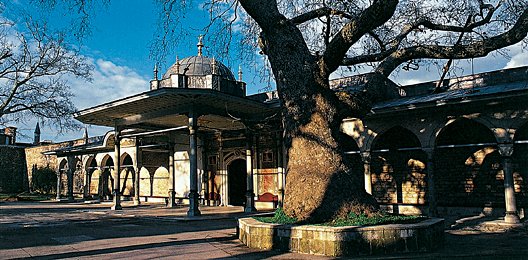54. Topkapi Palace, Istanbul, 1459 and later (Turkey)
This immense palace, which served as the official residence of the Ottoman Sultans from 1465 to 1853, is set on a prominent point overlooking the Golden Horn. Built on the site of the ancient Greek city of Byzantium, it was begun shortly after the conquest of Constantinople by Sultan Mehmed II. Insulated from the outer world, the palace was largely self-sufficient, having its own water supply, cisterns and kitchens. As many as 4000 people lived here at its height. Its plan is roughly rectangular, organised around four main courtyards, but frequent extensions and alterations resulted in an asymmetrical complex of hundreds of rooms, interspersed with gardens. Life in the palace was carried out according to strict ceremony, and speaking was forbidden in the inner courtyards. The innermost spaces were the private and inviolable sanctum of the Sultan and his harem. In 1921, with the end of the Ottoman Empire, the Topkapi Palace was turned into a museum. Its name, which dates only from the 19th century, means “cannon gate,” after a portal once located nearby.
